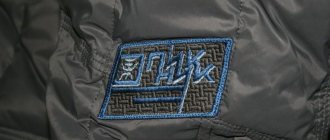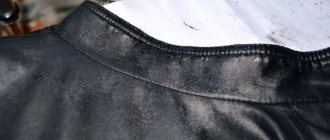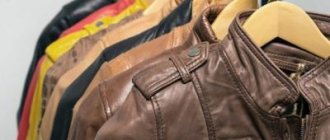Bolognese clothing is considered practical, comfortable and affordable. It is light, warm and moisture resistant. This jacket will not let you get wet and will reliably protect you from strong winds.
However, a thing made from bologna is not strong enough and breaks easily. In addition, the material can be accidentally burned. In this article we will look at how to seal a bolonese jacket if it is torn.
Features of the material of manufacture
When offering fabrics for the top of a down jacket, developers try to ensure that it is functional, protects from wind and cold, and has water-repellent properties. The most commonly used are synthetic, mixed and natural fabrics.
Bologna
Bolognese is a synthetic linen material for the manufacture of outerwear with waterproof properties. The advantages of the material include:
- strength;
- practicality to wear;
- ease;
- maintaining shape;
- high water-repellent properties;
- aesthetic appearance.
Among the disadvantages:
- poor breathability;
- high possibility of rupture if caught on a sharp object;
- ability to melt when exposed to high temperatures or open fire.
Polyester
This is one of the most common synthetic fabrics, used both in pure form and in mixtures with other materials. The advantages of polyester include:
- ease of care;
- machine washable;
- no deformation when worn;
- heat resistance;
- high water-repellent properties.
Polyester can form folds and creases that cannot be smoothed out. The qualities of polyester are significantly improved when mixed with polyamide, spandex or cotton. When repairing down jackets with a polyester coating, experts recommend not applying patches, but gluing thermal decals or using a special glue to restore damage.
Natural fabrics
Fabrics of plant, mineral or animal origin are called natural. These include cotton, linen, silk, leather and wool. Cotton or its combinations with natural or synthetic fibers are often used for jacket coverings.
Natural fabrics have a number of undeniable advantages:
- antiseptic and hypoallergenic properties;
- comfortable wearing conditions;
- hygroscopicity;
- strength;
- good thermoregulation and ventilation.
See also
Popular brands of brake pad glue and how to use it yourself
Disadvantages include the possibility of color loss, wear, creasing, and shrinkage after washing.
How to get rid of a hole in a down jacket
Despite the fact that winter jackets are in most cases made of reinforced materials, they can suffer from various types of damage, from snags to burns. Down jacket repair is carried out using several main methods:
- patches;
- thermal stickers;
- reflective tape;
- decorating the break point using a zipper or fittings.
The main difficulty when sealing a hole in a down jacket is the inconvenience. If the item is not repaired correctly, the filler may begin to come out. If the task seems difficult, it is recommended to take the jacket to the studio. Patch Thermal adhesive Reflective tape Zipper
What kind of glue will help?
When choosing glue for repairing a jacket, you must be guided by several principles. The composition should be:
- waterproof;
- elastic;
- colorless;
- resistant to light and temperature changes;
- do not change the structure of the fabric;
- have a thick consistency;
- do not spread;
- Don't freeze instantly so you have time to make changes.
Among the wide variety of adhesive compositions, you can choose an option suitable for a specific fabric and the nature of the tear.
Polyurethane
This type of glue reliably connects surfaces because it is made on a synthetic basis. It is produced in hard and elastic form. The second option is suitable for repairing jackets, down jackets and other fabric products. It has high adhesion and excellent resistance to temperature changes.
Polyurethane glue performs equally well at temperatures from -50 ⁰С to +120 ⁰С.
Rubber
The adhesive composition, which is based on rubber, is highly elastic and can be used to work with leather, fabric, rubber, glass, and wood. Latex rubber adhesive contains casein, which gives it additional elasticity and water resistance. Seams can be glued with styrene rubber-based glue. The composition, which includes natural rubber, is used to glue leather and fabrics together. It has high elasticity.
Polyvinyl acetate
This type of glue is well known to users as PVA. It can be used for fixation “temporarily” and “permanently”. Usually this glue is washed off after washing, since it does not tolerate moisture. But currently they produce polyvinyl acetate glue with high moisture-resistant characteristics. If desired, you can even find two-component adhesive compositions on sale that can withstand direct contact with water. They are best suited for repairing down jackets and down jackets.
Neoprene
Neoprene adhesive makes it easy to make on-site repairs. It dries in less than a minute and forms a strong bond that is flexible and durable. An adhesive composition based on neoprene can easily withstand elevated temperatures and is recommended for gluing elements made of leather, fabric, and rubber. The glue is transparent, waterproof, and can be used to repair jackets and down jackets.
Hot melt adhesive
Safe and non-toxic hot melt adhesive can be used to glue fabrics together. It is applied using a glue gun, which allows the composition to be distributed evenly over the surface. Hot-melt adhesive takes the form of rods that are melted in a gun, or powder for preparing the adhesive composition. The advantage of hot-melt adhesive is its speed of action.
Adhesive aerosol
The difference between aerosol glue and other types is that it can be applied using a spray can. The sprayer allows you to create an even layer of glue and fix materials in places that are difficult to reach for other types of glue. The connection it creates is elastic, the can is sealed, and the consumption is economical. You can apply several layers of adhesive. Complete drying occurs after 20 minutes.
See also
Instructions on how to dilute wallpaper glue Cleo, composition and varieties
Polyvinyl chloride
This type of glue is produced in the form of an aerosol. It is sprayed in an even layer on one surface, the second is applied on top and pressed with a press for two hours. Complete drying occurs after 6 hours. The adhesion of polyvinyl chloride glue is high and can be used for different fabric textures.
Double patch
If you put a patch on the inside of the jacket, the hole will no longer get bigger.
But the cut in the fabric is still visible. Therefore, it is most often recommended to install a double patch. For such purposes, a piece of fabric is attached to each item. If it is not there, you can cut a small piece from the inside of the pocket or from the inside.
This method is used if the cut is in a visible place, if the hole has uneven edges or is burned through. The steps are slightly different.
- If the edges of the hole are uneven, trim them with small scissors.
- Degrease with acetone on both sides.
- Cut a piece for the front side from the same material exactly the size of the hole and for the back side - a piece that matches the color and is a little larger.
- Apply glue to the edges of the patches and leave for 1-2 minutes.
- Place the larger piece on the back side and the small piece on the front side.
- Press and press for 3-5 minutes.
If the hole is not very large and the fabric is thin, the double patch may look rough and leave glue marks. In this case, you can attach a piece of polyethylene or non-woven adhesive-based material to the reverse side. Place a cloth the size of the hole on your face, cover it with a napkin and iron it.
When using an iron, it is not recommended to set the temperature above 110°, otherwise the bologna will melt.
Instructions for working at home
Before starting to repair the jacket, the following preparatory work is carried out:
- They study the type of down jacket material, its characteristics and possible methods of influence. Information can be found on the product label.
- Examine the damage to the jacket or down jacket.
- Decide on a repair method.
- Find the necessary materials and tools.
- Carry out repairs according to the chosen method.
Application of adhesive tape
This method is suitable for the case when the fabric clings to a nail and the gap is smooth, like a cut. For repair you need:
- Cut a piece from a piece of matching color and texture slightly larger than the size of the cut.
- Carefully cut off protruding threads on damaged fabric.
- Place the prepared tissue under the cut.
- Cut a piece of adhesive tape that is longer than the slit on the jacket.
- Place it between the flap and the cut.
- Carefully iron the hole by lowering and raising the soleplate of the hot iron.
The edges of the cut should be tightly closed at the time of ironing.
If the seam comes apart
If the jacket's seams have split and a hole has appeared, you need to sew it up by turning the down jacket inside out and ripping out the lining. When it is not possible to rip the lining, you can get rid of the hole using a hidden seam, by inserting a needle from the inside out and sewing the seam up with parallel stitches.
Hole in front
A sloppy tear or a cigarette hole located on the front flap of the down jacket should be masked. The most reliable way is to glue reflective tape to this place, stretching it along the entire length of the product.
If appropriate, you can apply embroidery or a decorative sticker to the tear area.
The product is torn at the back
A rip in the back of a jacket is a complicated case. In children's clothing, the hole is sealed using a patch that is applied at the bottom of the tear. First, its edges should be carefully trimmed. The patch is masked with applique or braid. On an adult jacket, the patch is disguised using rivets and other decorative elements.
How to hide a hole under a zipper
When the jacket is damaged in the form of a straight cut, it is masked with a zipper. The method is used only if the zipper can be inserted into this place, and its location there is quite acceptable.
To make the zipper look organic, you should follow the principle of symmetry and sew in another one - in a mirror image.
Using a blind seam
It is possible to repair the jacket using a hidden seam. To do this, you need to prepare threads to match the damaged fabric, pins, a needle, and scissors. Pin two parts of the cut. Without ripping the lining, stick a needle from the inside and, hiding the knot, sew the cut with stitches of the same length parallel to each other. The thread is securely fastened and hidden on the wrong side.
See also
How and how to properly glue plywood together with your own hands, types of compositions
How to fix a burnt hole
The hole resulting from burning the fabric can be disguised in different ways. It all depends on its size and location. If the size of the hole is small, fittings will help. The main thing is that it matches the style of the jacket. When the size of the burnt hole is significant, then two patches should be applied - one from below the fabric, the other from above. The second can be decorated with stitching or embroidery. The patches are applied with glue suitable for the material of the down jacket.
Iron-on adhesives and applications
This repair method is very fast and allows you to deal with the problem within a few seconds. The sticker or applique is applied to the hole so as to cover it with a margin. On top is a sheet of white blank paper. Using a heated iron, iron the thermal sticker until the plastic layer melts.
The use of polyethylene or non-woven fabric
To repair a polyester jacket, use dry glue in the form of a tape (non-woven fabric) or regular polyethylene. To this end, perform the following actions:
- The jacket is turned inside out and the lining is trimmed.
- Cut out a piece of non-woven or polyethylene and a patch.
- Connect the edges of the hole.
- On top there is interlining and patch.
- Iron through the fabric.
Additional pocket
Defects on the jacket can be closed using a pocket, which is cut out of the same material as the jacket or matching it in color and texture. The pocket is carefully folded in, the area where the jacket is damaged is sealed and stitched. The place of the decorative element must correspond to its purpose.
How to properly seal a hole or cut
When sealing a cut on your jacket, proceed according to plan:
- Select material for the patch.
- Turn the jacket inside out.
- Treat the hole with acetone or gasoline.
- Apply glue to the patch in an even layer.
- Connect the edges of the cut.
- Apply a patch and install a press on top.
Preparing to seal the hole
How to seal a bolognese jacket? If holes have formed in a pocket, sleeve or along a seam and now the hole significantly spoils the appearance of the outerwear, it needs to be repaired urgently. A patch that will repair cuts, pockets, sleeves and seams is perfect for this. But, unfortunately, at present, at home, a person can only tape his jacket so that the hole is completely masked. How to fix a hole in a jacket with glue? This will be done with a special glue that allows you to close the base of cuts or burns in jackets.
How to disguise a cut or holes on outerwear if it is made of leather?
We suggest you read: How to remove gel polish from fabric
To seal the hole you will need:
- glue;
- acetone;
- cotton wool;
- iron;
- press;
- scraps to make a patch;
- scissors;
- canvas, which must be dry;
- blade.
To sew your jacket, it is important to follow some tips. First, you need to carefully inspect the burned or cut bologna for damage. After this, the holes and seams of the product are assessed (you also need to pay attention to the lining). If the damage is minor, you can start creating a patch.
Combating defects in bolognese products
Many consumers probably remember the time when bologna jackets were at the height of popularity.
For their manufacture, a special nylon fabric is used, which includes a unique waterproof coating. But even in the modern world, such products are very popular, because they are affordable for every category of consumer, and also protect well from piercing wind and rain in bad weather. Despite significant advantages, such jackets have a main drawback - the relatively low strength of the material. One wrong move, and the jacket can easily be damaged due to mechanical or chemical effects. As practice shows, it is precisely such holes that are much more difficult to repair accurately. Before sewing up a Bolognese jacket, you need to assess the nature of the damage and the quality of the product itself.
Experts say that to eliminate a burn, rupture or cut, you must adhere to several rules:
- At the first stage, you need to choose the right adhesive composition for repairing outerwear. To do this, you should carefully study the label located on the inner lining of the jacket. It is best if the selected glue is tested on a small area of clothing that is invisible to prying eyes. Experts say that glue that contains a special ester of acetic acid and rubber has good properties. If such an option is simply not at hand, then you can give your preference to “Moment” glue.
- Now it's time to carefully cut the patch to fit the cut. A small piece of fabric made of rubberized material or bologna will look most organic and attractive. It is worth noting that the color of the patch and the jacket itself must match.
- The inside of the product must be thoroughly wiped with a cotton pad, which must be pre-moistened in acetone. After these manipulations, the jacket should lie for several minutes.
- At this stage, you need to apply glue to the patch (all manipulations must comply with the instructions). Be sure to wait a few minutes.
- Gradually glue a piece of fabric on the wrong side. To record the result, you need to place a small press on the treated area, the weight of which should be at least 2 kg. Wait 3 hours.
- There are situations when from the front side the gap looks very sloppy, then this place can be decorated with an appliqué of a suitable size and color.
It is also worth considering that some experts prefer to use a shorter and more reliable method of dealing with holes in jackets. The process itself consists of three mandatory steps:
- You can quickly and efficiently repair a torn item using two patches. First of all, you need to trim the edges of the hole with ordinary sharp scissors.
- Preparing bologna patches. It is worth noting that the piece of material that will be attached to the inside must be larger in diameter than the hole itself. But the front patch must exactly match in diameter.
- All that remains is to tape the damaged areas on the jacket to hide the damaged areas. After the manipulations have been performed, it is imperative to evaluate the result of the work done. If you are satisfied with it, then you need to cover the jacket with a fabric made of natural material (cotton, linen) and carefully iron it.
How to remove stains from a blazer
- Remove fresh grease stains with laundry soap. Rinse the stain and leave it overnight, then wash as usual;
- Sprinkle traces of fat with salt and leave for a few minutes. Rub the material with salt until the grease and streaks disappear completely;
- Ammonia can be used to remove stains from light-colored fabrics. Wipe the dirty area with a clean cloth. Clean only certain areas, otherwise the fabric will discolor elsewhere!
- Mix two tablespoons of dry mustard powder with water to make nutmeg. Apply the composition to the problem area and leave for an hour, then wash the clothes in a soapy solution;
- Take table vinegar and soak a cotton pad, then treat the affected areas and wash the jacket as usual;
- Heated potato starch will remove old stains. Moisten dirty areas with the product and leave for a few minutes. Then wipe the treated areas with a dry cloth;
- Bread crumbs are an effective remedy for removing any stains. Treat the contaminated areas with a piece of bread and leave for two to three hours. Then wash the clothes by hand using detergent or another suitable cleaning product;
- Dishwashing detergents remove stubborn stains. In this case, drop a little mixture onto the dirt and rub in the foaming solution. Leave for two to three hours and then rinse with running water;
- Tooth powder will be an effective method. Sprinkle it onto dirty areas and scrub with a soft brush. Finish washing and drying the jacket;
- Vinegar or baking soda can remove grease stains that are commonly found on collars, cuffs, and pockets. Sprinkle or pour a small amount of product onto a cotton pad and wipe in appropriate areas.
Braid, applique or ribbon as a patch
If a bolognese jacket has defects in the form of scratches or holes, sewing accessories will help correct the situation. The following are used as patches:
- Braid is a narrow woven or fabric strip that is used for decorative finishing and repair of clothing. It can be used to decorate scratches or cuts, and strengthen seams on the front or back side of the jacket. Differs from decorative tape in increased strength. The braid is made of cotton, linen or wool.
- Appliques are decorative elements made from scraps of fabric, adhesive interlining, decorative buttons, rhinestones, etc. This method of repairing jackets is suitable for creative people who can create entire compositions from pieces of different materials.
- Bias binding is a fabric strip cut on a bias, which is used for edging parts. Suitable for filling holes in the hem area of a sleeve. To prevent the trim from being noticeable, the trim is sewn onto both sleeves at once.
- Chevrons and stripes are decorative elements intended for finishing or repairing clothing. For those who have never held a needle in their hands, adhesive-based fabric patches are suitable. In fabric and accessories sales centers you can purchase original patches in the form of cartoon characters, motivational inscriptions, patriotic symbols, etc.
To disguise holes on bolognese jackets, decorative buttons, reflective stripes, and stripes with sequins are additionally used.
How to make a patch on a jacket in 5 minutes:
- sew the hole manually with thread of any color;
- attach the adhesive-based patch;
- Place gauze or cotton cloth folded in several layers on top;
- place a heated iron on top for 25-30 seconds.
Under the influence of high temperature, the hot-melt adhesive will become liquid and absorb into the jacket fabric. This patch holds tightly and does not come off even after machine washing.
What is known about natural and artificial leather (leatherette)
Before you learn how to glue leather, you need to consider what kind of material it is and what types there are.
There are several types:
- Artificial leather is granite, vinyl artificial leather, stretch leather and others. Leatherettes at a lower price, which are made from polymers. In appearance it is not much different from the natural one. It loses in terms of performance characteristics, however, it withstands mechanical stress better.
- Genuine leather is the most expensive option, which is used for sewing clothes, various accessories, making furniture, and finishing car interiors. It is comfortable to wear and durable.
- Recycled is an analogue of leather, made from natural scraps and parts.
- Eco-leather stands out as a separate group.
This is a modern material that is quickly gaining popularity.
Leather comes in vegetable and chrome tanning.
In addition to tanning methods, they are divided into:
- clothing;
- haberdashery;
- lining;
- furniture;
- shoe
They are made from bulls, sheep, goats, pigs, calves, and exotic animals.
According to the processing method, they are distinguished:
- suede leather;
- split wood;
- nubuck;
- perforated;
- embossed and some others.
According to the coating processing method:
- Painted with nitro paint, a relief created by a press.
- Uncoated - painted, but not further processed.
Eco leather
This is a combination of a polyurethane base with synthetic fibers. After launching into production, the number of animals killed to obtain natural material decreased.
Several strengths have been noted for which modern manufacturers and buyers value it:
- Various color variations.
- Resistance to mechanical stress.
- Less expensive production process.
- Visually, the pattern is difficult to distinguish from genuine leather.
- Easy to process and stitch.
- Durability, wear resistance.
- Low hygroscopicity.
- Does not cause allergic reactions.
To connect two separate parts made of this material, you can sew them, or use eco-leather glue.
How to sew regular fabric patches
A fabric patch will help to disguise a burnt hole on a jacket. To work you will need:
- threads to match the jacket;
- scissors;
- a piece of fabric;
- sewing machine.
Technique for sewing patches:
- from the inside out, rip the lining along the seam next to the hole;
- 2 identical parts are cut out from a flap suitable in texture, color and density;
- the hole is covered with patches on the front and back sides;
- fix the parts with pins;
- stepping back 2 mm from the edge, stitch it on a machine;
- At the final stage, the lining is sewn together.
To prevent the patch from sticking out, use only soft materials. Raincoat fabric would be an ideal option.
If a sewing machine is not available, jacket repairs are performed manually. The patch is sewn on with a hidden or stem stitch. In the second case, it is recommended to use bright threads. Then the stitching will look more like a decorative finish.
Useful tips
When performing work and further exploitation of the glued product, you must adhere to some tips:
- Glue the web onto clothes that are minimally susceptible to washing. With frequent washing, the seam will come apart and you will have to repeat the procedure again.
- When washing, choose a gentle cycle with low temperature.
- If the fabric is light and translucent, then the sticker on the clothing should be selected to match the color of the product. If there is no suitable one, then white is used.
- If a wide bend is required, and the tape is narrow, then it can be used in two layers.
Polyethylene or non-woven fabric
Polyethylene or non-woven fabric will help to disguise the cigarette hole. For repairs, you will additionally need a patch or piece of fabric that matches the color and texture of the bologna.
How to seal a bolone jacket at home:
- the jacket is laid out on the table;
- the lining is cut at the site of the defect;
- interlining is applied from the front part to the hole;
- a fabric patch of the same size is placed on top;
- cover with a cotton cloth and press the heated iron for 15-20 seconds.
We suggest you read How to tie a washcloth with your own hands
If you wish, you can repair a bologna jacket with non-woven fabric based on hot-melt adhesive. It is glued using the same principle as fabric stripes.
To ensure that the hole is sealed, the interlining is cut so that it overlaps the edge of the hole by at least 7-10 mm.











